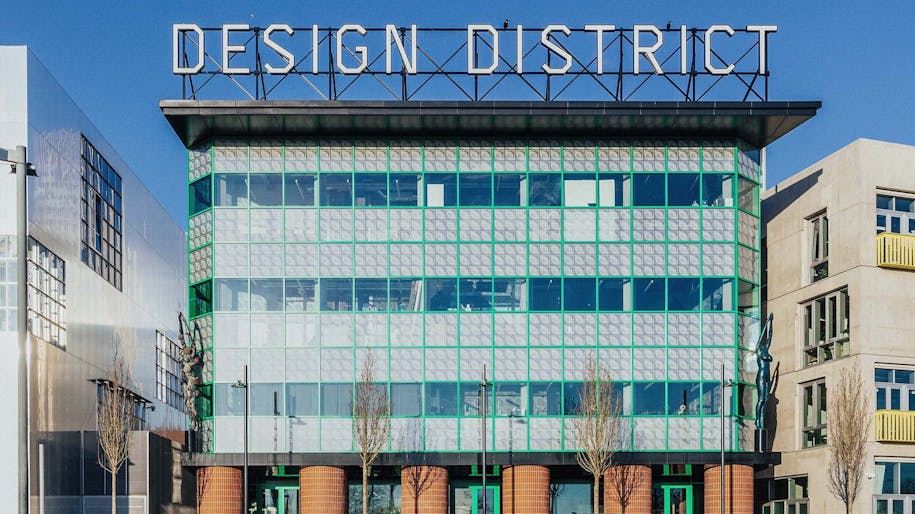
Meet David Kohn
The practice
David Kohn Architects is a London-based practice established in 2007, which works internationally on arts, education and residential projects. Londoners will best know it for A Room for London, a boat-shaped one-bedroom hotel conceived with artist Fiona Banner that temporarily perched on top of the Queen Elizabeth Hall on the Southbank. The practice is currently working on a new quad for New College Oxford, an architecture faculty for the University of Hasselt in Belgium and recently completed the Photography Centre at the Victoria and Albert Museum.
The buildings
Buildings A4 and B4 look like a pair of miniature glowing palazzi. Both have heavy red masonry bases and green glazed facades with a grid pattern. An illuminated rooftop sign on A4 announces your arrival at Design District. The architecture is classically-inspired but makes reference to other periods and ideas too. There’s the heavily adorned palazzi of the Venetian guild houses, but also the roadside architecture of the American Midwest loved by architects Robert Venturi and Denise Scott-Brown. You might even spot a nod to the late works of British architect James Stirling. The buildings speak of making rules and breaking them, and hope to inspire that approach in their tenants.

